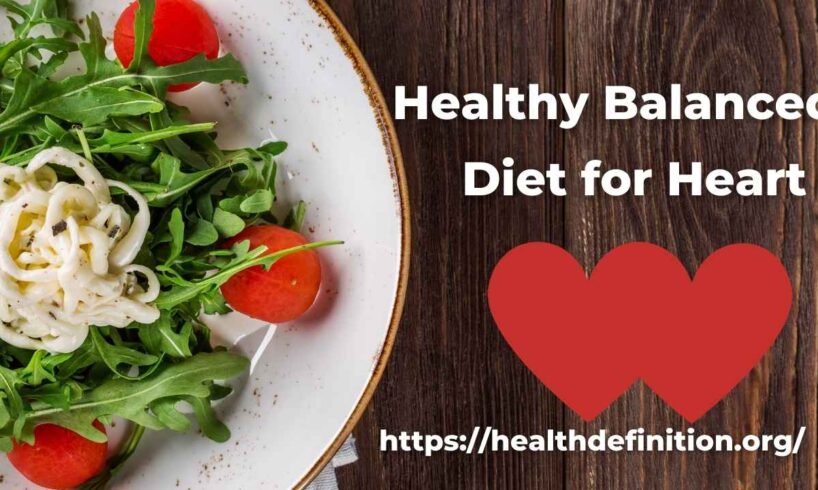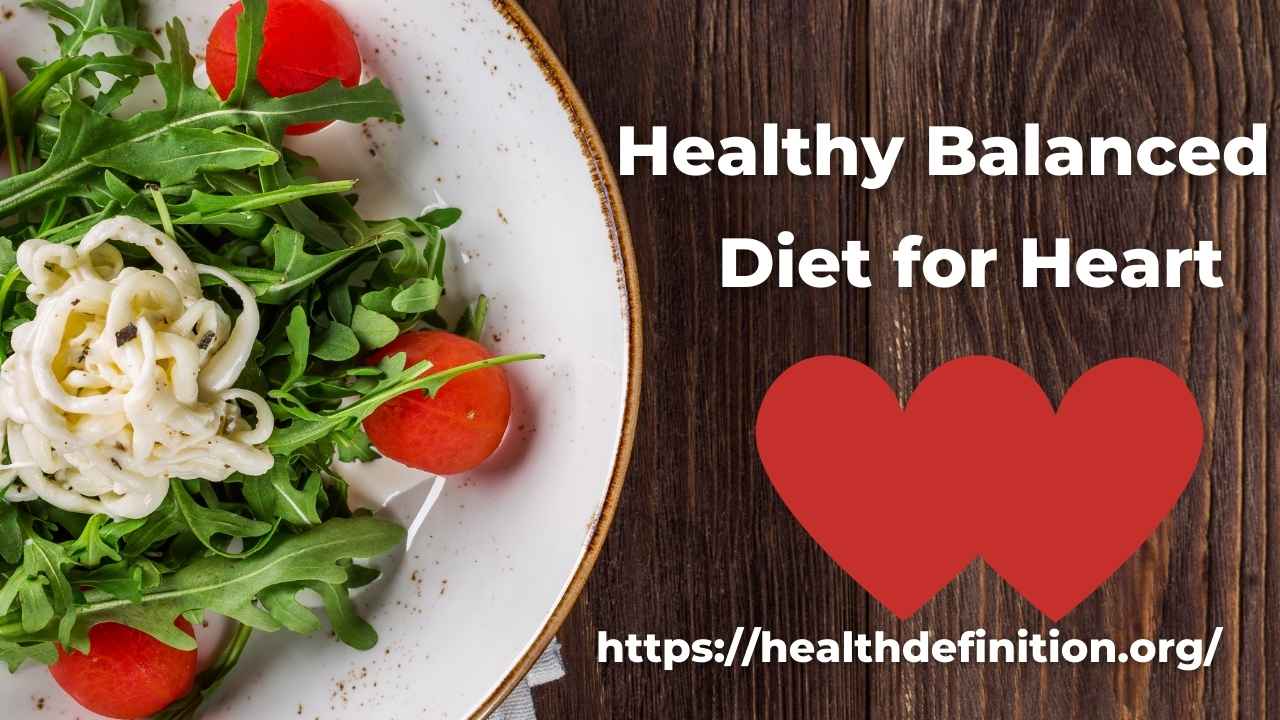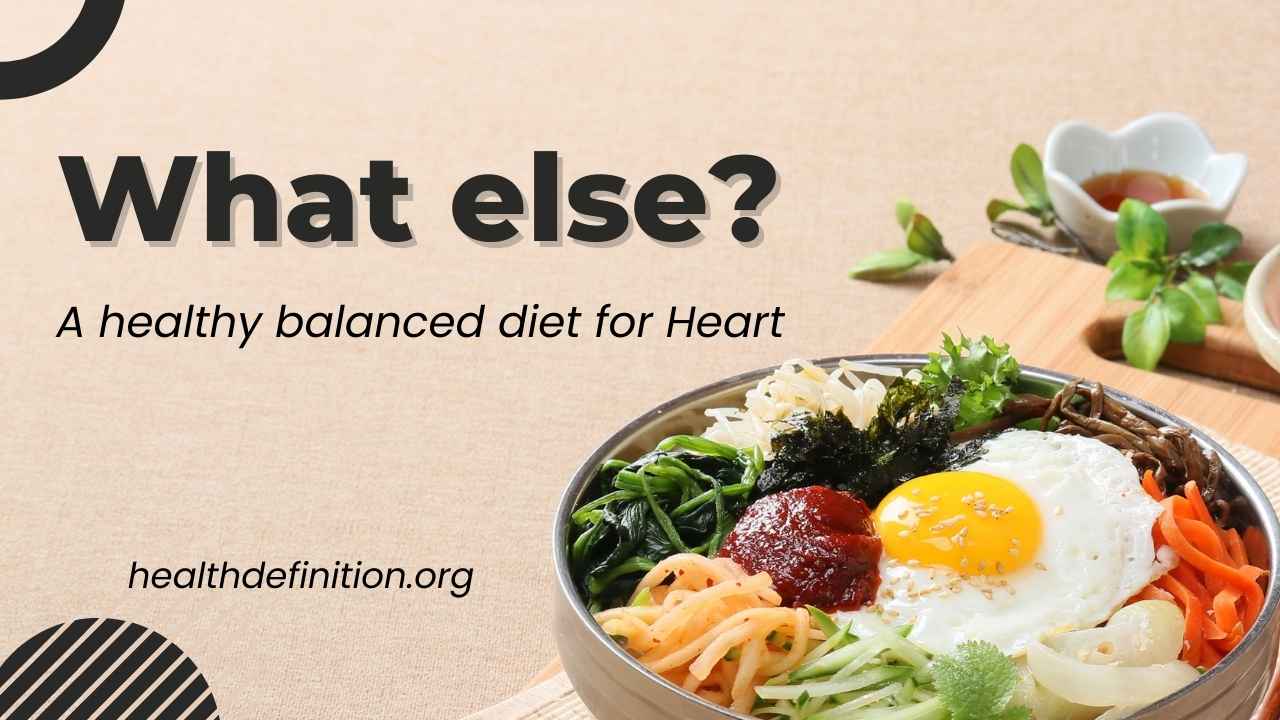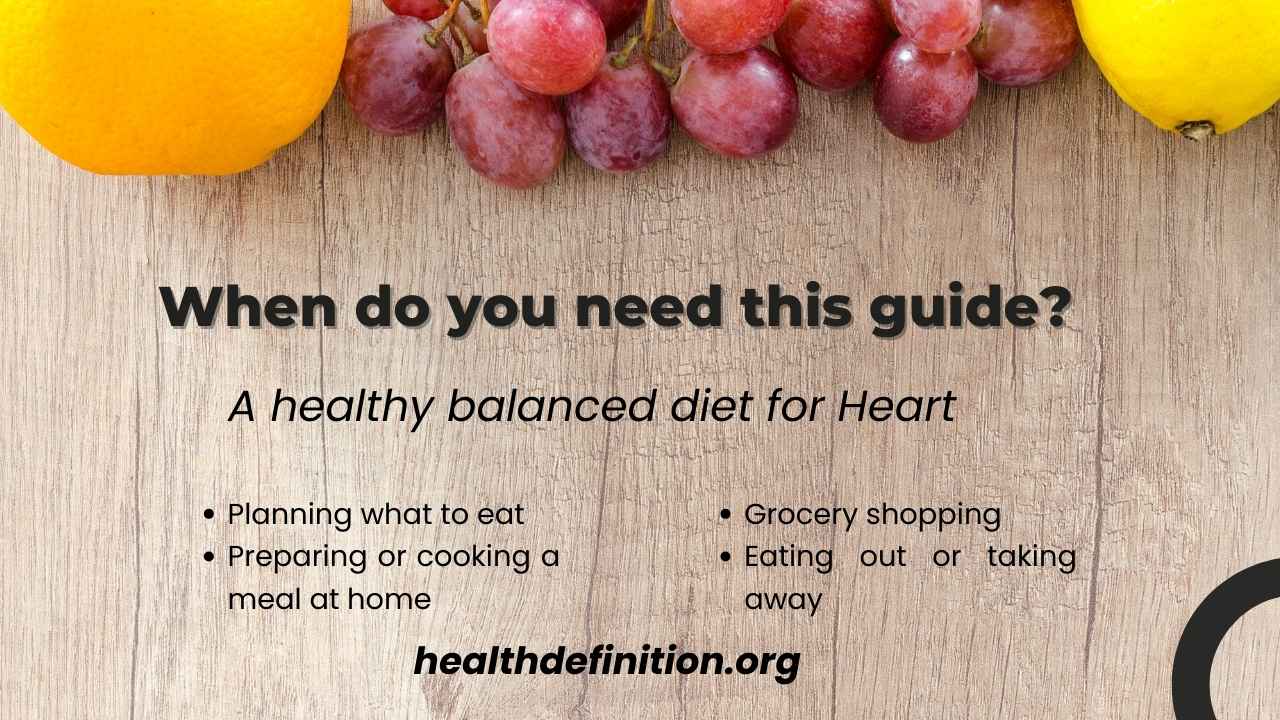
Understanding Heart Disease
Before jumping into the best eat less for heart illness inversion, it’s fundamental to get what heart infection involves. Heart infection envelops different conditions influencing the heart, including coronary course illness, heart assaults, and heart disappointment. Variables such as high cholesterol, high blood weight, corpulence, and diabetes contribute to the advancement of heart disease.
The Part of Count Calories in Heart Health
Diet plays a vital part in overseeing and turning around heart maladies. A heart-healthy slim-down can offer assistance in lowering cholesterol levels, decreasing blood weight, and progressing by and large cardiovascular well-being. The best slim-down for heart malady inversion centers on entire, natural nourishments that are rich in supplements and moo in unfortunate fats and sugars. Key Components of the Best Eat Less for Heart Illness Reversal
Emphasize Entirety Foods
The establishment of the best count calories for heart infection inversion is entire nourishment. These incorporate natural products, vegetables, entire grains, incline proteins, and sound fats. Entire nourishments are pressed with basic supplements, fiber, and cancer prevention agents that bolster heart health.
Fruits and Vegetables: Point for an assortment of colors and sorts. Berries, verdant greens, and citrus natural products are especially useful due to their tall antioxidant content.
Whole Grains: Select entire grains like brown rice, quinoa, and oats over refined grains. Entire grains are rich in fiber, which makes a difference in lower cholesterol levels.
Lean Proteins: Join sources of inclined protein such as angel, poultry, beans, and vegetables. Greasy angles like salmon and mackerel are great choices due to their omega-3 greasy acids, which are known to decrease irritation and progress heart health.
Sound Fats: Not all fats are made to break even. The best count calories for heart infection inversion incorporates sound fats while minimizing undesirable trans and immersed fats.
Monounsaturated Fats: Nourishments like avocados, olive oil, and nuts are rich in monounsaturated fats, which can offer assistance in lowering terrible cholesterol levels.
Omega-3 Greasy Acids: Found in greasy angle, flaxseeds, and walnuts, omega-3 greasy acids are basic for heart wellbeing. They offer assistance to decrease triglycerides and lower blood pressure.

Processed nourishments frequently contain undesirable trans fats, tall levels of sodium, and included sugars, all of which can contribute to heart infection. The best eat less for heart infection inversion empowers the shirking of:
Sugary Refreshments: Delicate drinks and vitality drinks are tall in sugar and calories, contributing to weight pick up and expanded heart illness risk.
Processed Snacks: Chips, treats, and other bundled snacks regularly contain unfortunate fats and added substances. Pick for entire nourishment snacks like natural products, nuts, or yogurt instead.
Decrease Sodium Intake
High sodium admissions are connected to high blood weight, a noteworthy chance figure for heart infection. The best eat less for heart malady inversion includes:
Fresh Herbs and Flavors: Utilize herbs and flavors to flavor your dinners instead of salt. Garlic, basil, and turmeric not as it were improve flavor but also offer well-being benefits.
Low-Sodium Alternatives: When acquiring canned or bundled nourishments, select low-sodium forms to offer assistance in overseeing your salt intake.
Control Parcel Sizes
Portion control is imperative in any eat less, particularly for those looking to invert heart infection. Gorging can lead to weight pickup, which increases the chance of heart infection. Consider the taking after tips:
Mindful Eating: Pay consideration to starvation prompts and eat gradually to permit your body to flag when it’s full.
Smaller Plates: Utilizing littler plates can offer assistance control parcel sizes and anticipating overeating. Sample Feast Arrange for Heart Infection Reversal
To outline the best slim down for heart illness inversion, here’s a test feast plan:
Breakfast
Oatmeal topped with new berries and a sprinkle of chia seeds. A container of green tea
Snack
A little modest bunch of almonds or walnuts
Lunch
Quinoa serving of mixed greens with blended greens, cherry tomatoes, cucumber, and a lemon-olive oil
dressing
Grilled chicken breast or chickpeas for protein
Snack
Sliced apple with almond butter
Dinner
Baked salmon with steamed broccoli and sweet potatoes. A side serving of mixed greens with an assortment of colorful vegetables
Dessert
A little bowl of blended natural product or a piece of dim chocolate (70% cocoa or higher)
Lifestyle Changes for Heart Health
In expansion to dietary changes, receiving a heart-healthy way of life is significant for turning around heart illness. Normal physical action, push management.

What are the best foods to heal your heart?
Here are some of the best foods to include in your diet for heart disease reversal:
- Fruits and Vegetables: Aim for a variety of colorful fruits and vegetables, which are rich in antioxidants and nutrients.
- Whole Grains: Choose whole grains like brown rice, quinoa, and whole wheat bread over refined grains to boost fiber intake.
- Healthy Fats: Incorporate sources of healthy fats, such as olive oil, avocados, nuts, and fatty fish like salmon, which are beneficial for heart health.
- Legumes: Include beans, lentils, and peas, which are high in protein and fiber, helping to lower cholesterol levels.
- Nuts and Seeds: Snack on walnuts, almonds, and chia seeds, which provide healthy fats and can support heart health.
- Low-Fat Dairy: Opt for low-fat or fat-free dairy products, which can provide calcium and protein without excess saturated fat. – Dark Leafy Greens: Incorporate spinach, kale, and Swiss chard, which are high in vitamins, minerals, and antioxidants that support heart health.
- Berries: Blueberries, strawberries, and raspberries are rich in flavonoids and antioxidants, which can help reduce blood pressure and inflammation.
- Fatty Fish: Regularly consume fish like mackerel, sardines, and trout, which are high in omega-3 fatty acids known to lower triglycerides and improve heart function.
- Avocados: These are packed with monounsaturated fats and potassium, which can help lower cholesterol levels and support overall heart health.
- Garlic: Adding garlic to your meals can help lower blood pressure and cholesterol levels due to its active compounds.
- Dark Chocolate: Choose dark chocolate with at least 70% cocoa, as it contains antioxidants that can improve heart health when consumed in moderation.
How to live a long life with heart disease?
To live a long life with heart disease, focus on adopting heart-healthy lifestyle changes. This includes eating a balanced diet rich in fruits, vegetables, whole grains, and healthy fats, engaging in regular physical activity, managing stress, quitting smoking, and ensuring adequate sleep. Regular check-ups with your healthcare provider are also essential for monitoring your condition.
How to avoid heart blockage at home?
To avoid heart blockage at home, prioritize a heart-healthy diet rich in fruits, vegetables, whole grains, and healthy fats. Regular exercise, maintaining a healthy weight, quitting smoking, and managing stress are also crucial for heart health. Regular check-ups with your healthcare provider can help monitor your heart condition. Heart-Healthy Lifestyle Changes
- Get Moving: Incorporate various forms of exercise such as aerobic, strength training, flexibility, and balance exercises into your routine to stay active.
- Participate in Community Activities: Engage with family, friends, or community groups to foster social connections and support.
- Know Your Numbers: Regularly check your cholesterol levels, blood pressure, and other important health metrics to stay informed about your heart health.
- Eat Plant-Strong: Focus on a diet rich in fruits, vegetables, whole grains, nuts, and seeds while minimizing processed Best Foods for Heart , high sugar, and high salt items.
- Read Labels: Pay attention to nutrition facts and ingredient lists to make healthier food choices.
- Get Quality Sleep: Aim for 7-8 hours of restful sleep each night to support overall health.
- Practice Mindfulness: Dedicate 15-30 minutes daily to relax and reduce stress, which can positively impact heart health.
What exercises prevent heart attacks?
To help prevent heart attacks, focus on aerobic exercises such as walking, cycling, and swimming, which improve circulation and lower blood pressure. Incorporating strength training and flexibility exercises, along with regular physical activity for at least 150 minutes a week, can also significantly benefit heart health. Types of Exercises for Heart Health
- Aerobic Exercises: Engage in activities like brisk walking, jogging, cycling, swimming, or dancing. Aim for at least 150 minutes of moderate-intensity aerobic exercise each week.
- High-Intensity Interval Training (HIIT): Incorporate short bursts of intense activity followed by rest periods. This can improve cardiovascular fitness and heart health.
- Strength Training: Include resistance exercises at least two days a week. This can involve bodyweight exercises, weight lifting, or resistance bands to build muscle and improve metabolism.
- Flexibility and Balance Exercises: Activities like yoga or tai chi can enhance flexibility, balance, and overall well-being, contributing to heart health.
Frequency and Duration
- Regular Schedule: Aim for a minimum of four to five days of exercise each week, mixing different types of workouts to keep it interesting and effective.
- Longer Sessions: Dedicate at least one day a week to longer activities, such as hiking or a longer bike ride, to further enhance cardiovascular endurance.
Additional Considerations
- Enjoyment: Choose exercises you enjoy to maintain motivation and consistency. Whether it’s a group class, a sport, or outdoor activities, enjoyment is key.
- Listen to Your Body: Pay attention to how your body responds to different exercises and adjust your routine as needed to avoid injury and ensure sustainability.
Conclusion
Reversing heart malady is not a fair plausibility; it is achievable through a devoted way of life and dietary changes. The best count calories for heart infection inversion emphasizes entire, nutrient-dense nourishment while minimizing handled things tall in undesirable fats, sugars, and sodium. By centering on natural products, vegetables, entire grains, incline proteins, and sound fats, people can altogether move forward in their heart well-being and by and large well-being.
Incorporating careful eating hones, controlling parcel sizes, and remaining physically dynamic are fundamental components of this travel. Furthermore, overseeing push-through strategies such as contemplation, yoga, or normal workouts can encourage upgraded heart health.
Ultimately, the way to turn around heart illness is an all-encompassing approach that combines a heart-healthy count of calories with a positive way of life changes. By making these alterations, people can not as it were diminish their hazard of heart infection but appreciate a more beneficial, more dynamic life. Keep in mind, that it’s never too late to begin making changes that can lead to a more beneficial heart and a brighter future

(FAQs) about the best diet for heart disease reversal
What best best Foods for Heart for Heart should I avoid to reverse heart disease?
To effectively reverse heart disease, it’s crucial to avoid best best Foods for Heart for Heart high in saturated and trans fats, added sugars, and excessive sodium. This includes processed foods, sugary beverages, fried foods, red meats, and refined grains.
2. Can a vegetarian or vegan diet help in reversing heart disease?
Yes, a vegetarian or vegan diet can be highly effective in reversing heart disease. Plant-based diets are typically rich in fruits, vegetables, whole grains, legumes, nuts, and seeds, which provide essential nutrients and fiber while being low in unhealthy fats. Research has shown that these diets can lower cholesterol levels, reduce blood pressure, and improve overall heart health.
3. How much omega-3 fatty acid should I consume for heart health?
Best food for heart health, it is generally recommended to consume at least two servings of fatty fish per week, which provides a good source of omega-3 fatty acids. If you prefer plant-based sources, consider incorporating flaxseeds, chia seeds, and walnuts into your diet. Supplements can also be considered, but it’s best to consult with a healthcare provider for personalized recommendations.
4. Is it necessary to completely eliminate all fats from my diet?
No, it is not necessary to eliminate all fats from your diet. In fact, healthy fats are essential for overall health. Focus on incorporating monounsaturated and polyunsaturated fats, such as those found in avocados, olive oil, nuts, and fatty fish. These fats can help improve cholesterol levels and support heart health, while unhealthy trans and saturated fats should be minimized.
5. How quickly can I expect to see results from dietary changes?
The timeline for seeing results from dietary changes can vary based on individual circumstances, including the severity of heart disease and adherence to the new diet. Some individuals may notice improvements in cholesterol levels and blood pressure within a few weeks, while others may take several months. Consistency is key, and it’s important to combine dietary changes with other healthy lifestyle practices for the best results.
Bullet points about “best diet for heart disease reversal”
- Focus on Whole Foods: Prioritize a diet rich in whole, unprocessed Best Foods for Heart , including fruits, vegetables, whole grains, lean proteins, and healthy fats to provide essential nutrients and fiber.
- Incorporate Healthy Fats: Emphasize sources of healthy fats, such as avocados, olive oil, nuts, and fatty fish, while minimizing saturated and trans fats found in processed best Foods for Heart and red meats.
- Limit Added Sugars and Sodium: Reduce intake of added sugars and sodium by avoiding sugary beverages, processed snacks, and high-sodium foods, opting instead for fresh herbs and spices for flavor.
- Increase Fiber Intake: Aim for a high-fiber diet by including legumes, whole grains, fruits, and vegetables, which can help lower cholesterol levels and improve heart health.
- Practice Portion Control: Be mindful of portion sizes to prevent overeating and maintain a healthy weight, which is crucial for heart disease reversal.
- Stay Hydrated: Drink plenty of water and limit sugary drinks and excessive caffeine, as proper hydration supports overall health and can aid in weight management






